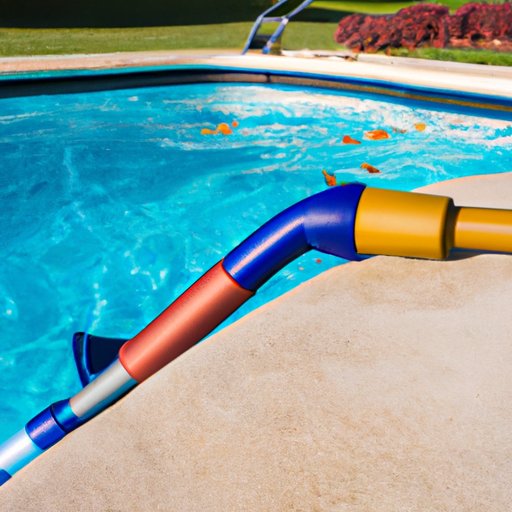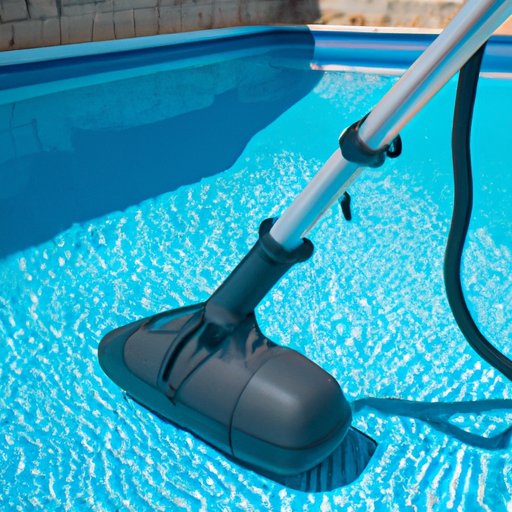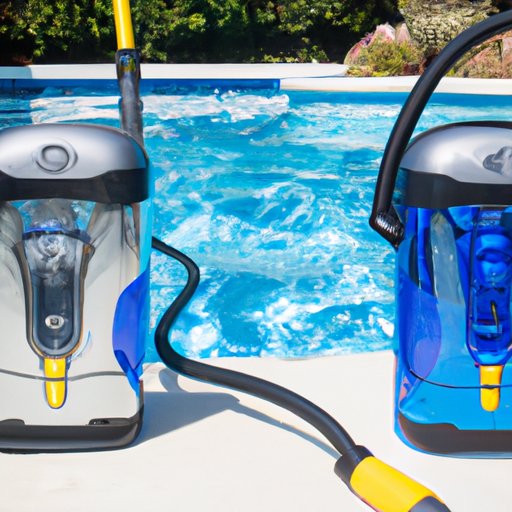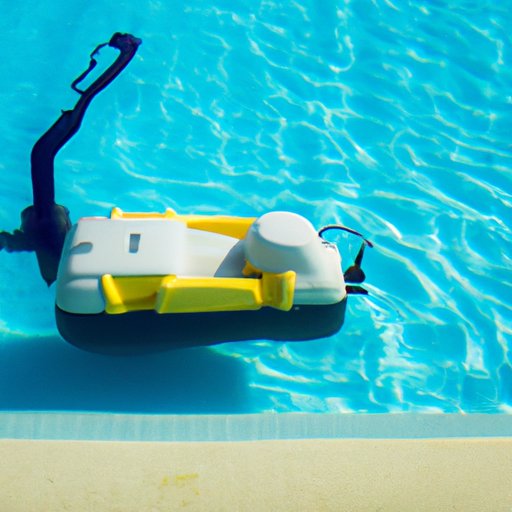Introduction
Pool vacuums are an essential tool for keeping your swimming pool clean and free of debris. They can be used to remove dirt, leaves, and other debris that has collected in the bottom and sides of the pool. There are two main types of pool vacuums: automatic and manual. This article will explore how pool vacuums work, including a step-by-step guide to operating one, troubleshooting common issues, tips for maintenance, and benefits of using a pool vacuum.
Types of Pool Vacuums
Automatic pool vacuums are typically powered by electricity and use suction to suck up debris from the pool floor. They typically come with a hose attachment that is connected to the pool’s filtration system. Automatic pool vacuums are simple to operate and require minimal effort on the part of the user.
Manual pool vacuums are operated manually, using a pole and brush to scrub away debris from the pool floor. Manual pool vacuums can be used to clean small areas of the pool or to spot clean specific areas. Manual pool vacuums are less powerful than automatic pool vacuums, but they still do an effective job of cleaning the pool.
Step-by-Step Guide to Operating a Pool Vacuum
Once you’ve purchased a pool vacuum, it’s time to get started. Here’s a step-by-step guide to help you get started:
1. Setting up the vacuum. First, you’ll need to assemble the vacuum according to the instructions provided. This usually involves connecting the hose to the vacuum and attaching the appropriate accessories. Once the vacuum is assembled, you’ll need to connect it to the pool’s filtration system.
2. Using the vacuum. Once the vacuum is connected to the filtration system, you’ll need to start the pump. The pump will create a suction that will draw debris into the vacuum. You’ll then need to move the vacuum around the pool, making sure to cover all areas.
Once the vacuum has finished its job, you’ll need to turn off the pump and disconnect the vacuum from the filtration system. You can then empty the debris from the vacuum and store it away until it’s needed again.
Troubleshooting Common Issues with Pool Vacuums
Even the best pool vacuums can experience problems from time to time. Here are some common issues and how to solve them:
1. Clogs. Clogs can occur when debris gets stuck in the hose or filter. To avoid clogs, make sure to regularly check the filter and clean it as needed.
2. Suction problems. If the vacuum is not picking up debris, it could be due to a lack of suction. Make sure the filter is clean and that the hose is securely connected to the pool’s filtration system.
3. Leaks. Leaks can occur if the hose is not properly connected to the pool’s filtration system. Make sure the hose is tightly secured to the filtration system to prevent leaks.

Tips for Maintaining Your Pool Vacuum
Regularly maintaining your pool vacuum will ensure that it operates properly and lasts for years to come. Here are some tips for maintaining your pool vacuum:
1. Cleaning the filter. Regularly cleaning the filter will help keep the vacuum running smoothly. Make sure to rinse the filter after each use to remove any debris that may have been collected.
2. Replacing parts as needed. Over time, parts of the pool vacuum can become worn out or damaged. Make sure to inspect the vacuum regularly and replace any parts that are worn or broken.

Benefits of Using a Pool Vacuum
Using a pool vacuum can provide numerous benefits, such as improved water quality and reduced time spent cleaning. According to a study conducted by the University of California Berkeley, pools cleaned with a pool vacuum are significantly cleaner than pools cleaned without one. The study found that pool vacuums were able to remove 99.8% of bacteria and other contaminants from the pool, compared to just 74.7% for pools cleaned without a pool vacuum. Additionally, using a pool vacuum can reduce the amount of time spent cleaning, as the vacuum does most of the work for you.

Comparing Automatic and Manual Pool Vacuums
When deciding which type of pool vacuum to purchase, it’s important to consider the pros and cons of each type. Automatic pool vacuums are more powerful than manual pool vacuums and require less effort on the part of the user. However, they are typically more expensive than manual pool vacuums. Manual pool vacuums are less powerful but are usually cheaper and easier to use.
Conclusion
Pool vacuums are an essential tool for keeping your swimming pool clean and free of debris. This article has explored how pool vacuums work, including the types of pool vacuums, a step-by-step guide to operating one, troubleshooting common issues, tips for maintenance, and benefits of using a pool vacuum. Whether you choose an automatic or manual pool vacuum, regular maintenance and use will help ensure that your swimming pool stays clean and safe for years to come.
(Note: Is this article not meeting your expectations? Do you have knowledge or insights to share? Unlock new opportunities and expand your reach by joining our authors team. Click Registration to join us and share your expertise with our readers.)
